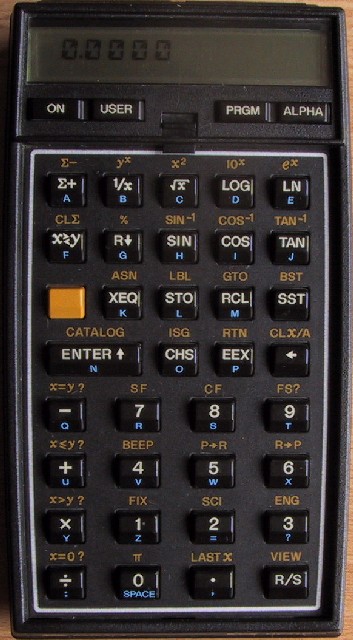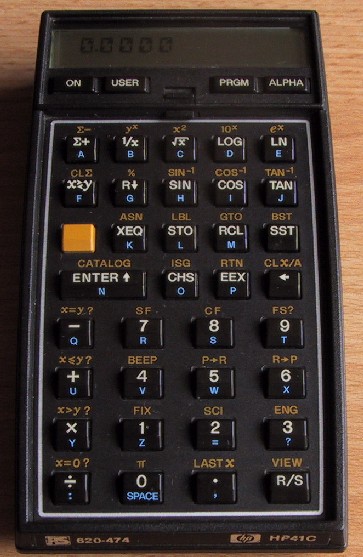hp 41c
| the 41c, first introduced in 1979 was another
breakthrough for hp. highly programmable, with an extensive and expandable
feature set together with alphanumeric display and naming capability.
rather than dot matrix, the display is a segmented lcd with additional segments so as to be able to display letters and a wide range of punctuation and other symbols. programs and functions could be given names and data input and output could be mixed with text. the user mode meant that your own programs could be attached to the keyboard rather than having to be called up by name. the 41c has 63 registers' worth of storage. registers can be traded with program steps so that between 200 to 400 fully-merged steps are available. the initial setting is 46 program registers and 17 register memories. the unit is highly expandable. on the top there are four sockets for expansion packs. these packs can have additional memory, rom programs or allow connection of custom peripherals like the card reader and the bar code wand. programmatically it was excellent. an extensive function catalog, labels (global and local), subroutines (up to 6 deep), a wide selection of conditional branches, loop control (isg, dse), flags, indirect addressing and far easier debugging and editing due to the alphanumeric display of instructions. the user manual introduces the machine thus,
|
 |
program example: sums of reciprocal powersmost people know that 1+1/2+1/3+1/4+... + 1/n diverges as n increases, but the sums of reciprocal squares converges. ie 1+1/(2^2)+1/(3^2)+1/(4^2)+... +1/(n^2) as n increases. the latter series converges to pi^2/6 in the limit. more generally, we have z(s) = 1/(1^s)+1/(2^s)+1/(3^s)+... + 1/(n^s) here is a program to calculate z(s) for s >= 2.
|
 |